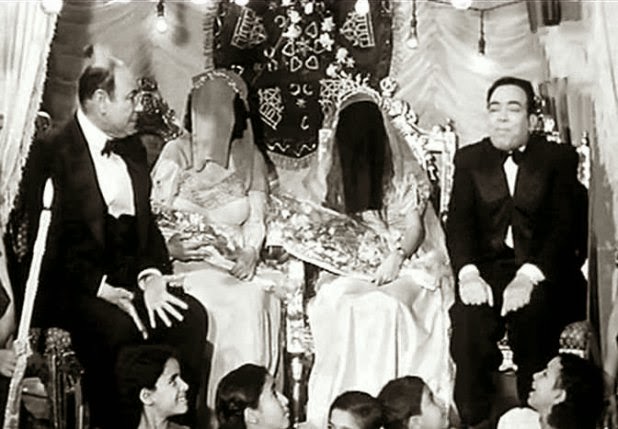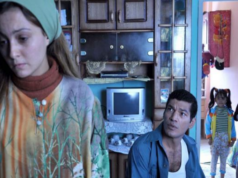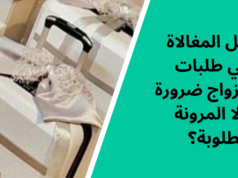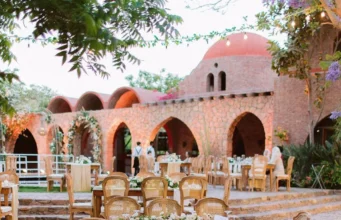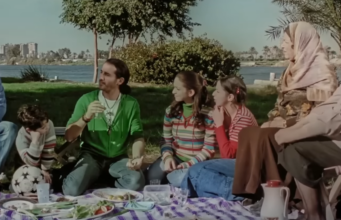

Why would the groom carry his bride across the doorway? Or why does the bride keep her wedding gown out of her groom’s sight until she walks down the aisle? Why would a sane well-mannered girl pinch a bride in the knee?
When it comes to transmission of beliefs and customs from one generation to the next, particularly from mother to daughter, the superstitions of the wedding day are abound.
Let’s hunt down those superstitions until we come up with logical reasons why those widespread wedding traditions exist in the first place:
1. The bride tossing the bouquet


It’s traditional for the bride to throw her bouquet at her wedding and for all single girls present to compete in catching it. The girl who catches the bouquet is said to be the next to marry. But where did this ritual originate?
This tradition comes from England. Since the bride probably won’t wear her dress again, after the wedding, single girls would chase the bride and rip pieces of the her dress in order to obtain some of her good luck. Over the years, wedding dresses became pricey so women keep them either as a souvenir or to pass them on to a daughter for her wedding day.
To prevent girls from hacking the wedding dress, brides began throwing other objects as a distraction, like the garters. Later, the bouquet became the most traditionally thrown object.
2.Bridesmaids write their names on the sole of the bride’s shoes


Tradition states that if bridesmaids sign the sole of the bride’s shoes, the last signature to rub off will be the next to get married.
Bridesmaids have fun with this by being strategic about where they write their names. If she wants to get married she’ll put her name in an area likely to give her the results she wants. They may also encourage the bride to dance more or less depending on their personal aims.
This trend has Turkish roots. Once, a Turkish bride didn’t have the means to buy proper shoes for her wedding and was going to wear an old one. Her friends passed the hat between them and got her a new pair of shoes; they all signed on the sole as a souvenir. The girl whose name didn’t rub off, got married a few weeks after, and that’s how it all started.
3.“2o2rosi El 3arousa f Rokbetha Te7asaliha f gom3etha.”


This one is purely Egyptian! Years ago, in a small village in Upper Egypt, a bride on her wedding day started mocking a girl who didn’t get any marriage proposals yet. Cheesed off and done with teasing, the girl attacked the bride but everyone got in between them so the girl only managed to pinch the bride’s knee.
A week later, the cousin of the bride, who used to hate her attitude, heard the story and appreciated what the girl did to her, and bang, he decided to ask the girl to marry him. Everyone got so surprised and said “2o2rosi el 3arousa f Rokbetha Te7asaliha f gom3etha.”
4. It’s bad luck for the groom to see the bride in her wedding dress before the ceremony.


The time the arranged marriages were a popular custom, especially as a business deal between families, the to-be-married couple weren’t permitted to see each other before the wedding out of fear that if the groom met the bride before the wedding and thought she wasn’t attractive enough, he’d call off the wedding, casting shame onto the bride and her family. Meeting her for the first time at the wedding wouldn’t give him any opportunity to have second thoughts.
And that veil the bride covers her face with? Don’t be fooled; that veil’s main purpose was also to keep the groom from finding out what the bride looked like until the last possible minute, when it was too late to back out.
5. The Groom Carries The Bride Across The Doorway Of Their New Home To Prevent Bad Luck.


In Medieval Europe, it was scandalous for a woman to show enthusiasm about getting married. By the groom carrying the bride over the doorway, she evaded looking too eager about consummating the marriage.
Western Europeans, on the other hand, considered that a bride who tripped over the doorstep would bring misfortune to her home and her marriage. The groom carrying the bride into the home was a good way to avoid such a mishap altogether.


